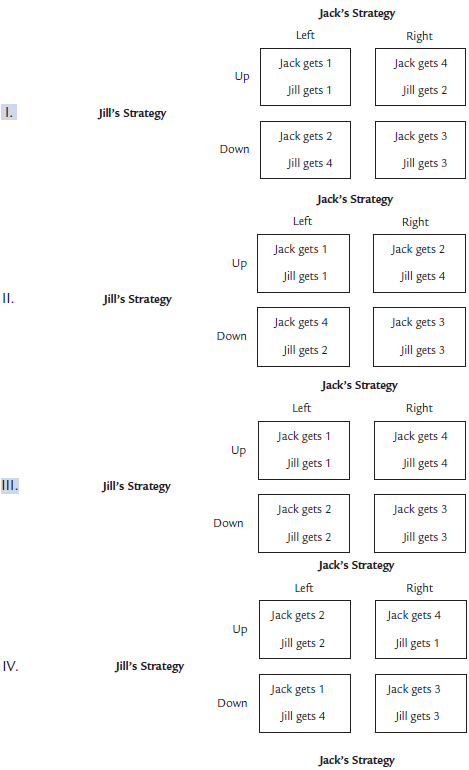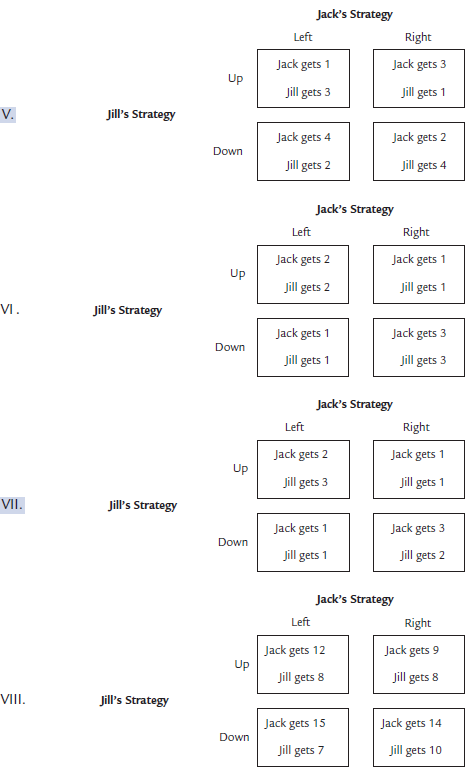The problems in this problem set refer to the following game matrices. In each case, Jack chooses
Question:

The outcomes show how many buckets of water are rewarded.

1. In each game above, identify all of the Nash equilibria.
2. In each game above, identify all of the Pareto optima.
3. In each game above, does Jack have a dominant strategy? Does Jill?
4. In each game above, what happens if Jack goes first?
5. In each game above, what happens if Jill goes first?
6. For each game above, create a reasonable story (like those that go with the exhibits in the text) that might lead to these numbers appearing in the matrix.
7. Create a "tree" showing which outcomes are Pareto-preferred to which in the Kodak-Fuji game of Exhibit.
8. Can you find examples of games (either among those that have appeared in the chapter or by creating them yourself) with the following characteristics?
a. There are no Nash equilibria.
b. There is exactly one Nash equilibrium, but it is not Pareto-optimal.
c. There is more than one Nash equilibrium, but none of them is Pareto-optimal.
d. There is more than one Nash equilibrium, and all of them are Pareto-optimal.
e. There is more than one Nash equilibrium, and some are Pareto-optimal while others are not.
9. Can there be a game with no Pareto optimum?
10. Suppose that the games of Exhibits were played as sequential games. In each case, suppose that the player who chooses a column goes first. What are the outcomes of these games? Now suppose that the player who chooses a row goes first. In which cases do the outcomes change?
11. True or False: In a sequential game where the second player has a dominant strategy, he will always adopt that strategy.
12. True or False: In a sequential game where the first player has a dominant strategy, he will always adopt that strategy.
Step by Step Answer:






